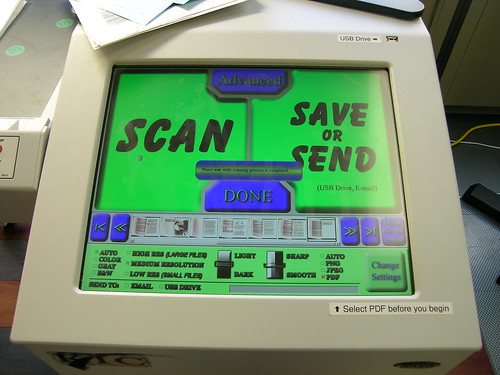
photo originally from akseabird
I’m pretty skeptical when people call anything for sale “revolutionary.” However, a friend sent me this photo which was up on Flickr. It’s a tool called the Bookeye book scanner. It’s a library digitzation product, but if you look at the photo, it’s being used as a tool for the public — or University of Alaska at Anchorage students — to scan documents to PDF, JPG, TIFF or PNG and then save to USB drive, burn them to a CD, ftp them, save them to a network drive or email them to themselves. Their website even has usage stats that shows what people did with the first million pages they scanned. Good data, and it’s broken down by library type which is even more interesting to me, to see the differences in usage patterns. [thanks manuel]